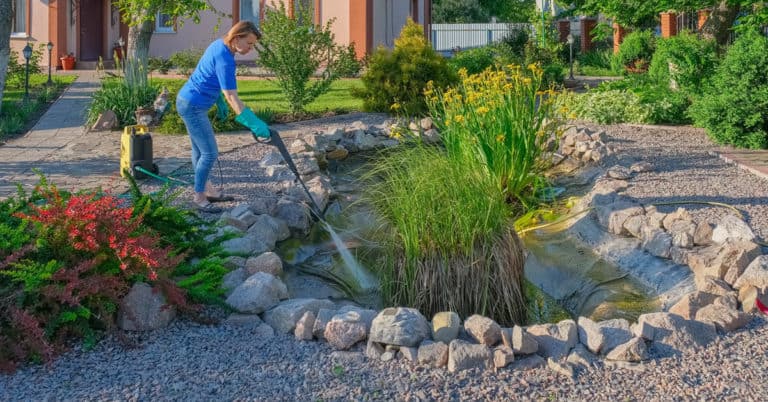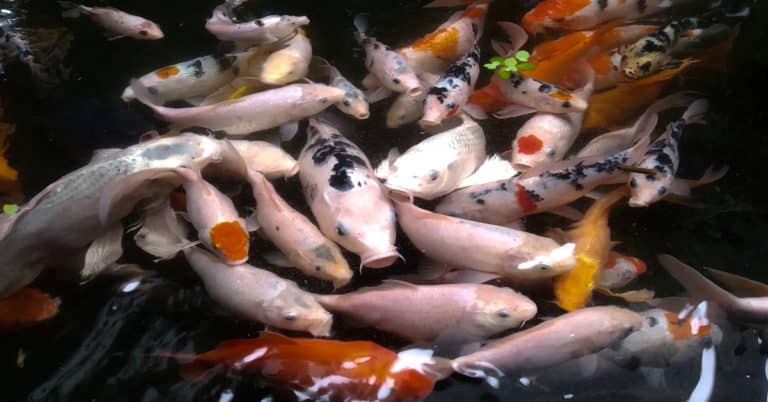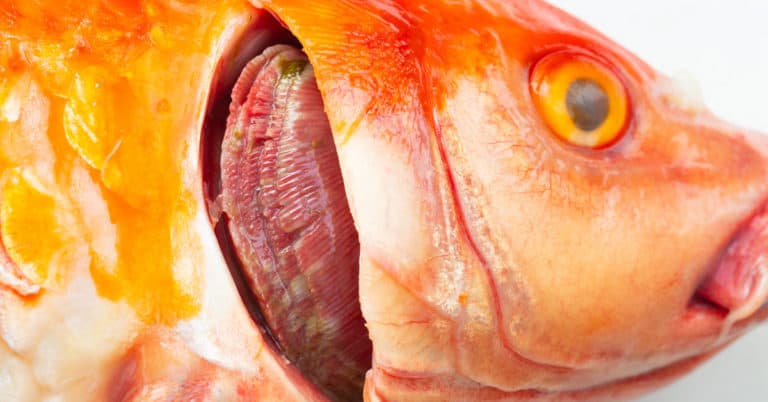Are you a new proud owner of your own koi fish pond? Or perhaps you've had your own pond for a long time and recently went to do one of your regular check-ins, only to find that your pond is full of foam.
I've been there myself, and it's a pretty scary experience, but foam buildup in a pond is more common of an occurrence than you might think. So, don't worry if you're seeing it for the first time and are afraid that something is seriously wrong with your koi pond.
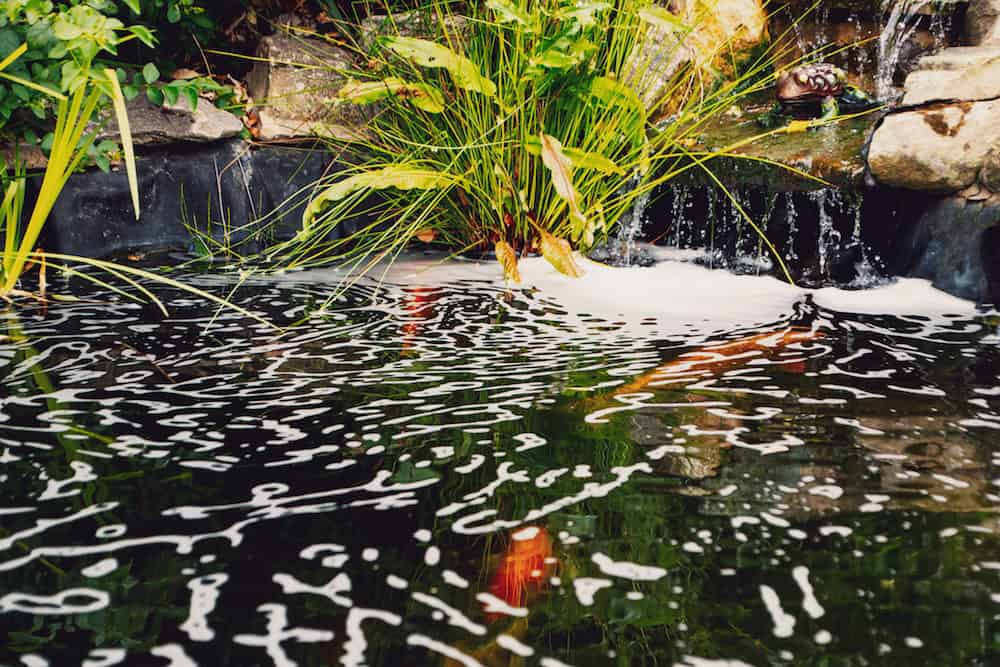
Foam in a koi pond is nothing terrible as long as you treat it sooner rather than later!
In this article, I'll tell you all you need to know about what causes the foam to appear in a koi pond, and I'll also explain some solutions you can use to remedy the issue quickly and easily.
These solutions will include:
Now, let's get into these causes and solutions so you can get your pond back to being free of foam for you and your koi!
When it comes to what creates foam in a koi pond, there are several different potential causes, some of which you might have already thought of yourself. However, some are not all that obvious, so I'll break down each of the most common ones.
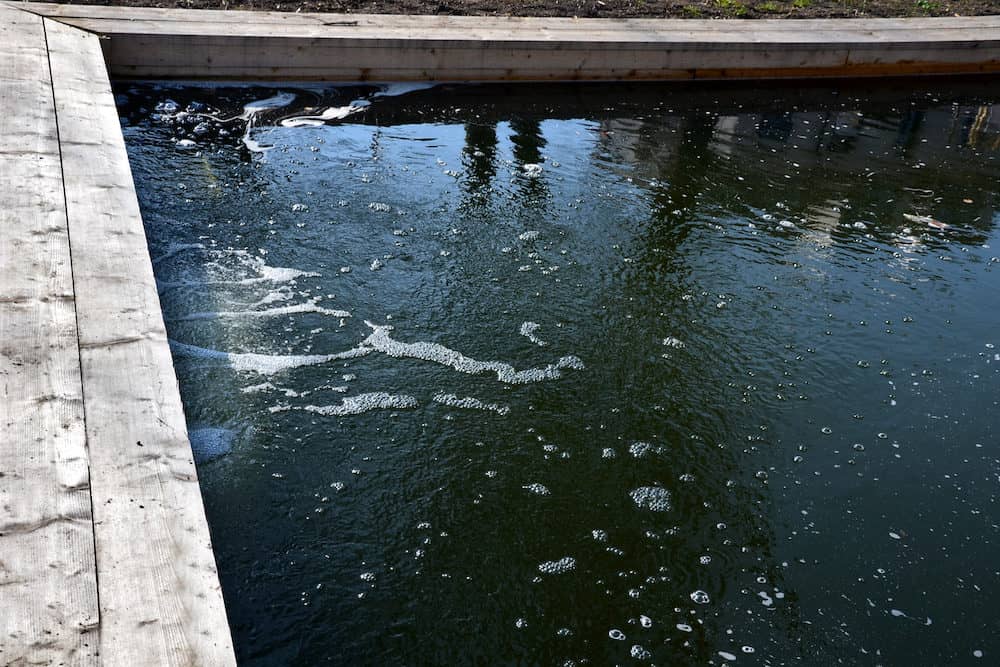
Soap is probably the most apparent cause of pond foam, and it is most definitely the easiest to either confirm or rule out. Just do a quick mental check on whether you recently brought something containing soap near your koi pond.
It takes only a slight dash of soap to cause lots of foam, so it certainly could be the culprit in your case. If you end up discovering that soap is indeed the cause of the foam, do an immediate water change to protect your koi from any harmful soap chemicals.
Debris in your pond is another cause of foam that is relatively easy to detect. Specifically, you'll want to keep an eye out for any leaves, greenery, stick and twigs, leftover fish food, fish waste or potentially dead fish.
Any of these can cause the foam to form in your koi pond, so your best bet is to conduct daily checks to ensure you have no heavy amounts of debris buildup going on. Having a reliable pond filter can help mitigate this problem.
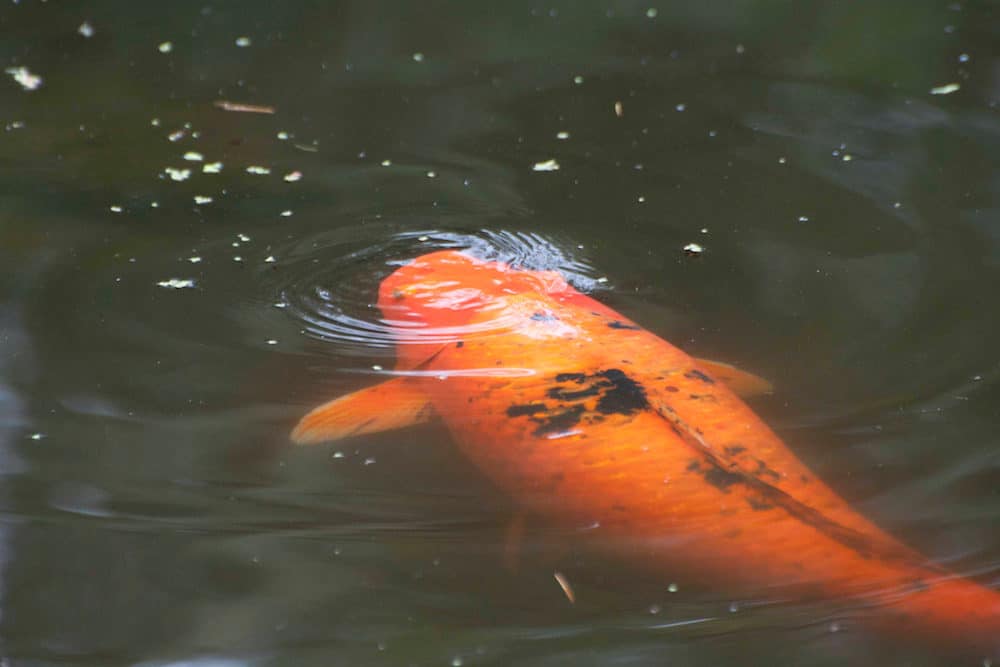
If the condition of your koi pond's water is poor, then you can most definitely expect to find foam in it. This most often occurs when there is a lack of proper filtration, so your pond will experience increased waste that causes the foam to arise.
Referring back to the previous cause, if your pond has debris or organic waste in it, that will add to the poor quality of the water and make the foam problem even more pronounced.
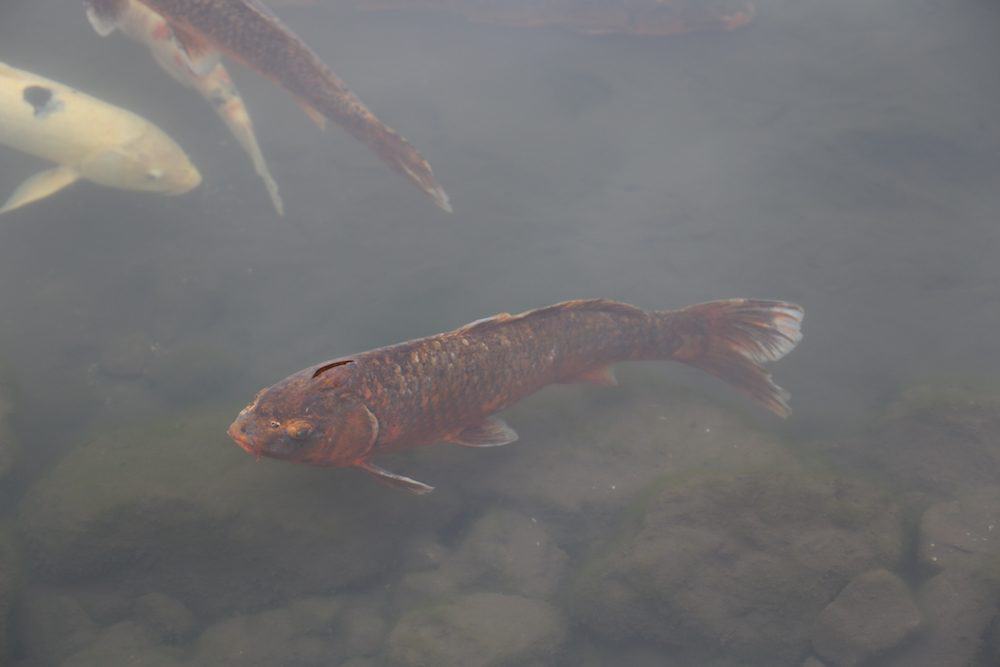
Using a pond water test kit to check the conditions of your pond's water is always a good idea, and if you do not already own a kit, it is highly recommend to look into buying one.
Among other things, a test kit will save you and your koi from having to deal with potentially bad water conditions or bacteria in the future!
Feeding your koi too much food can result in them not eating all of it, and if food is leftover in your pond, it will start to rot away and turn into waste that creates foam.
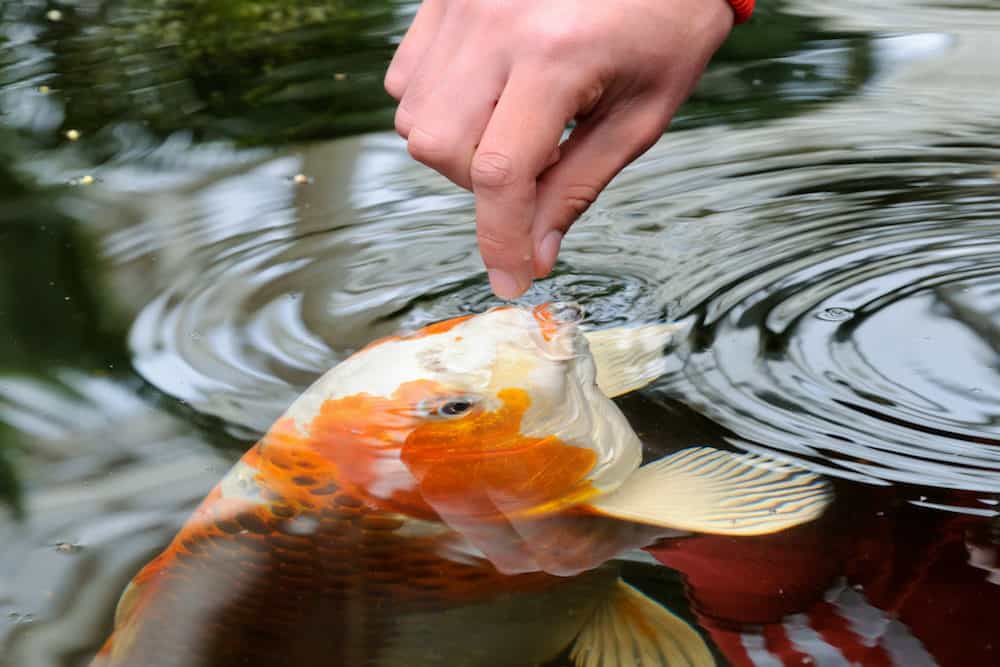
You want to always have as little organic material in your pond as possible to reduce foam buildup, and not overfeeding your koi is a good way to do this.
Instead, feed them however much food you know they will eat in one sitting without leaving any leftovers.
Now that you know some of the most common things that might be causing foam to appear in your koi pond let's talk about some easy solutions that you can do yourself to remove the foam and maintain clear water!
Changing the water in your koi pond more often is a remedy that can work for every potential foam cause discussed above. In some ways, it's like pushing a magic reset button.
A water change will eliminate foam in your water and dissolved organic compounds, but remember that this is not a permanent solution since the foam can eventually build back up in your new water.
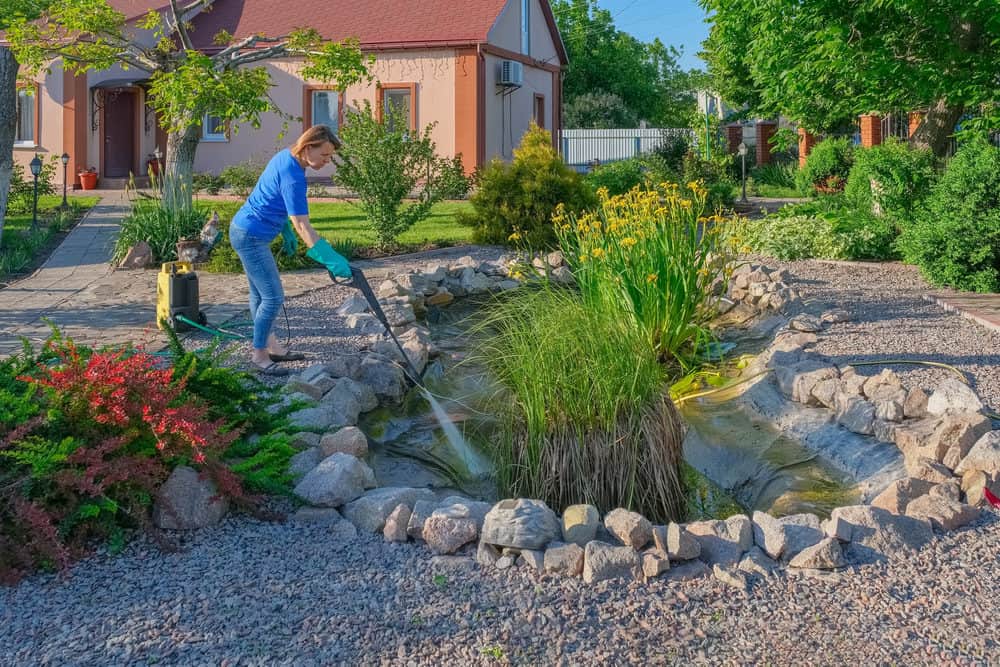
There are many ways to go about water changes, and you should read up on the various options to find one that works best for you. The method of allowing a continuous stream of water to trickle into your pond while an overflow removes any excess water is a highly effective way of keeping the pond surface clean.
It's easy to manage and control, as you will only need a hose/water line and an overflow setup, both of which are relatively straightforward to maintain long-term.
A de-foaming agent is another great overall solution to foam problems.
Because de-foaming agents are safe to use on koi fish, you don't have to fear the chemicals potentially causing your fish any harm.
However, as good of a fix as this is, I will warn you that it is probably the most temporary fix you can go for. A defoamer does not remove debris or improve your water quality if that quality is already poor. Because of that, using de-foaming agents alongside a more permanent solution instead of relying on them entirely is a recommended solution.
In some cases, foamy water buildup is a mere result of too many fish in one pond.
This is often not the cause of foam, but just to cover all your bases, make sure that the amount of fish in your pond is not exceeding your pond's size and filtration.
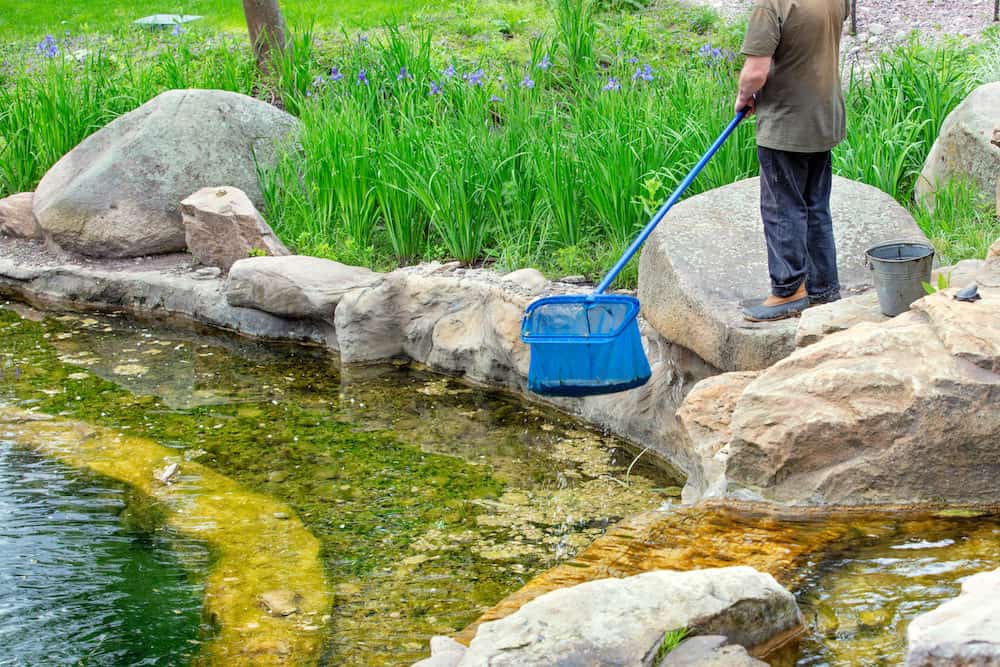
Suppose there are too many fish in a pond that cannot easily house them all. In that case, the water quality will naturally not be able to maintain itself because the filtration won't keep up with all the fish, so that the foam will come as a result.
Due to filtration systems being so intricate and important, it is also recommended to get a professional opinion on your pond's filtration to determine if it is adequate for the number of koi that are present.
You can make a judgment call on your filtration system yourself but only do this if you understand the pros and cons of such a system.
Lastly, as I mentioned earlier, overfeeding your fish may be causing your foam problem, so feed your fish less food and see what happens.

Just don't starve them! Instead, try and do a little less food here and there to see if the foam goes away or lessens.
If the foam does cease as a result of giving your koi less food, you can continue to feed them that lessened amount.

